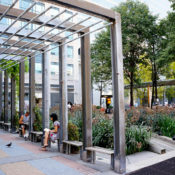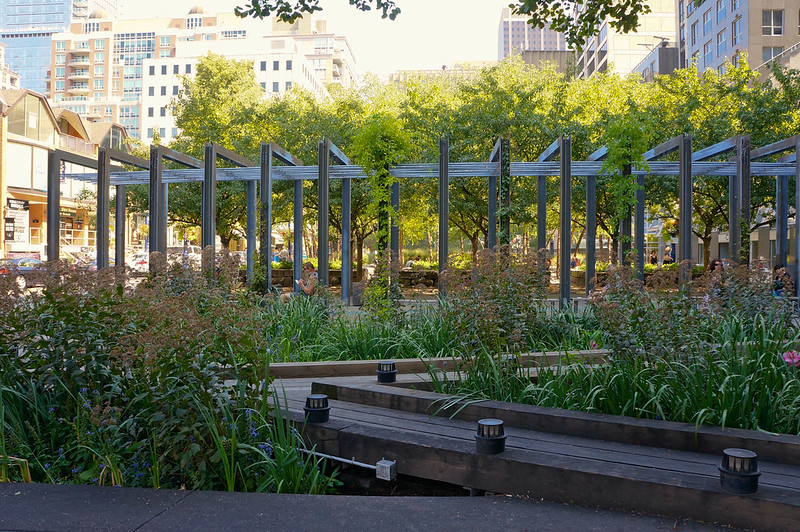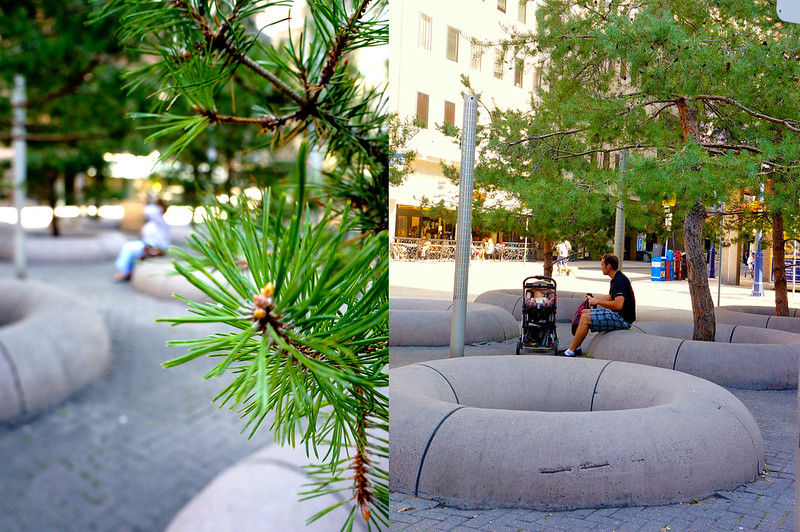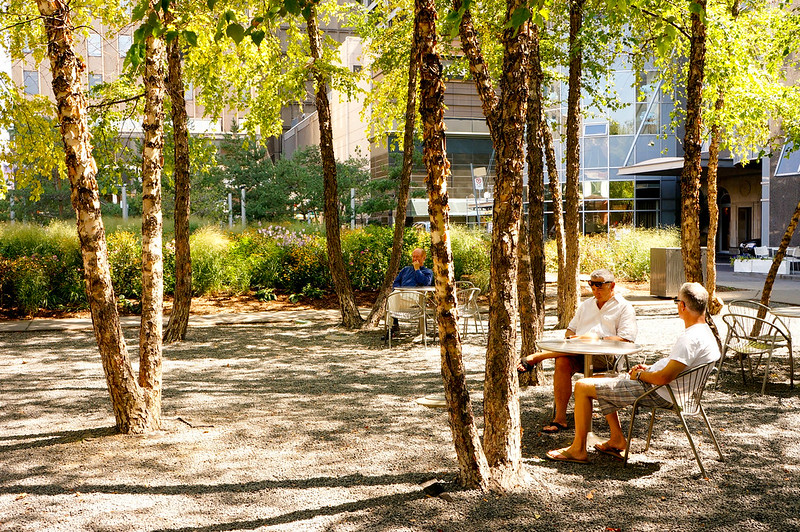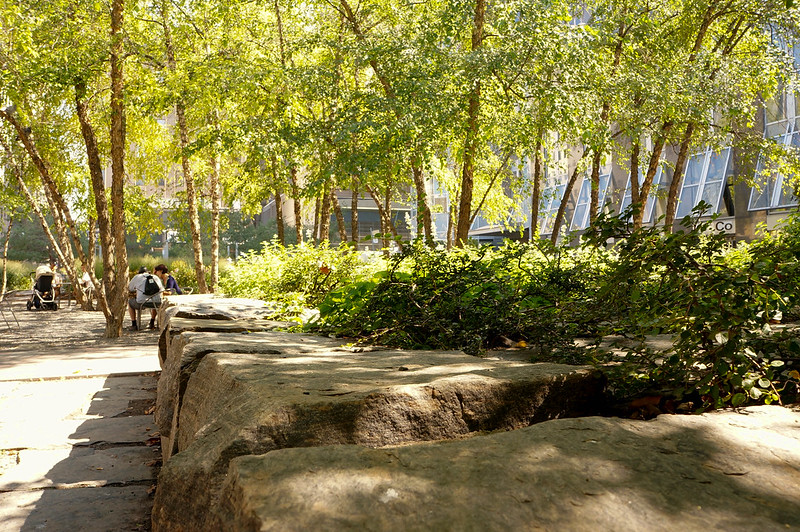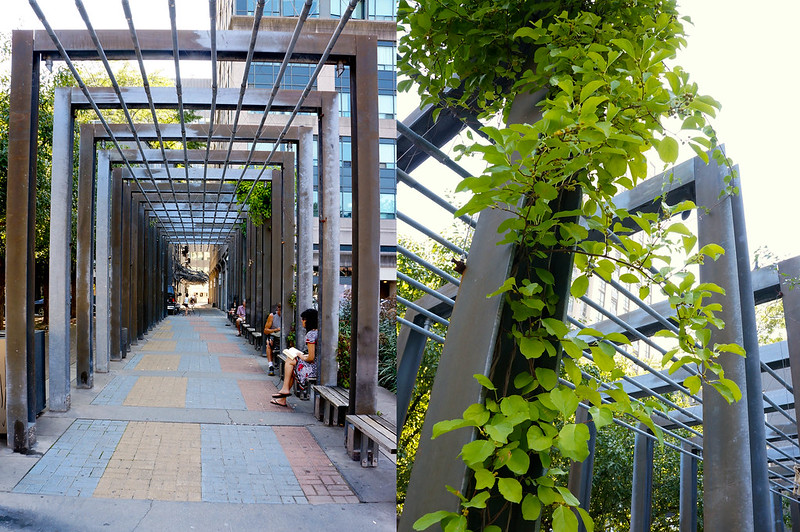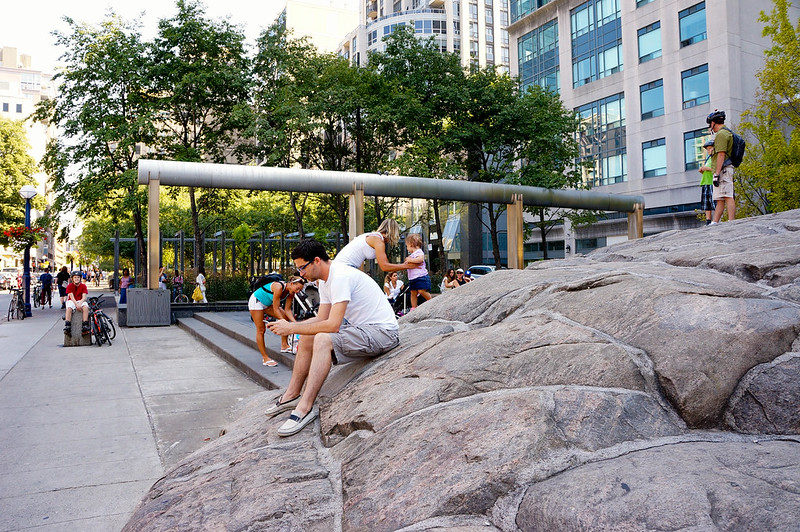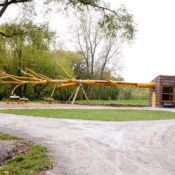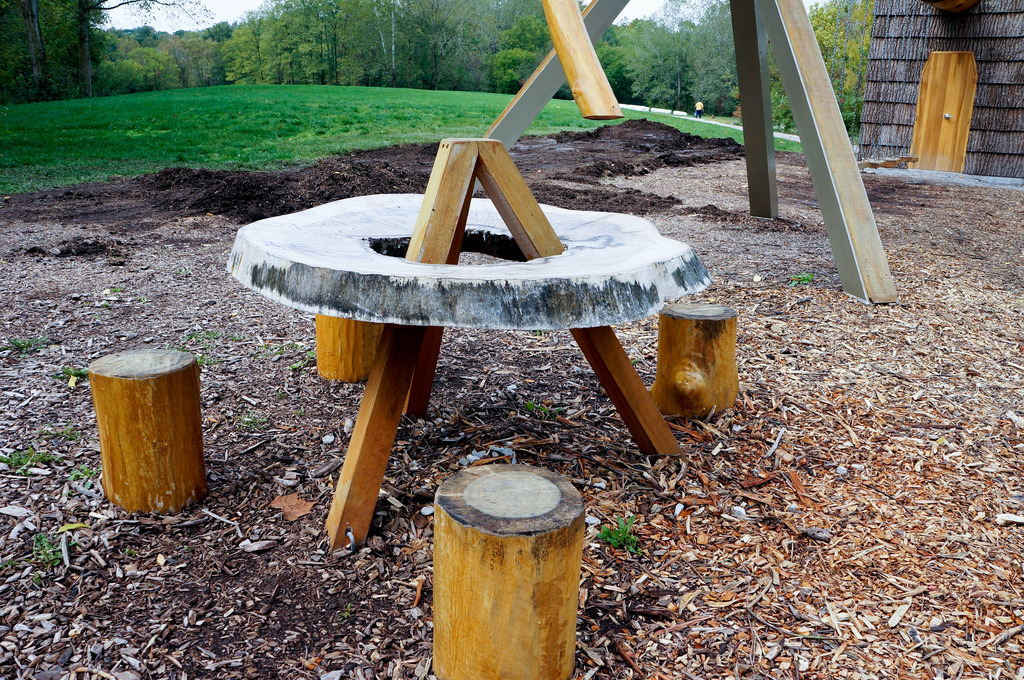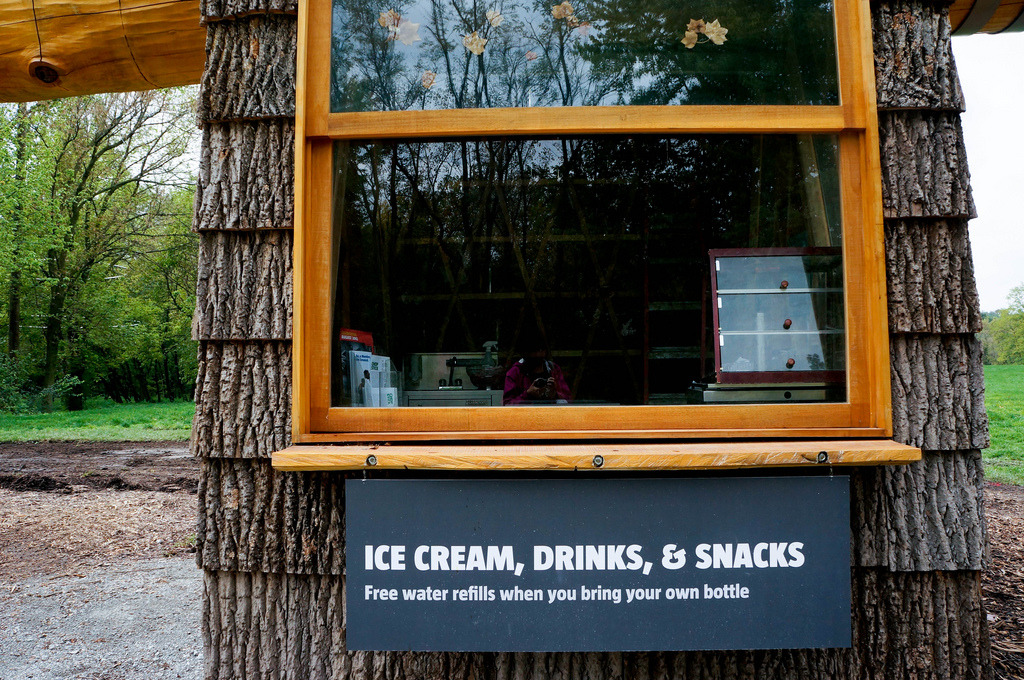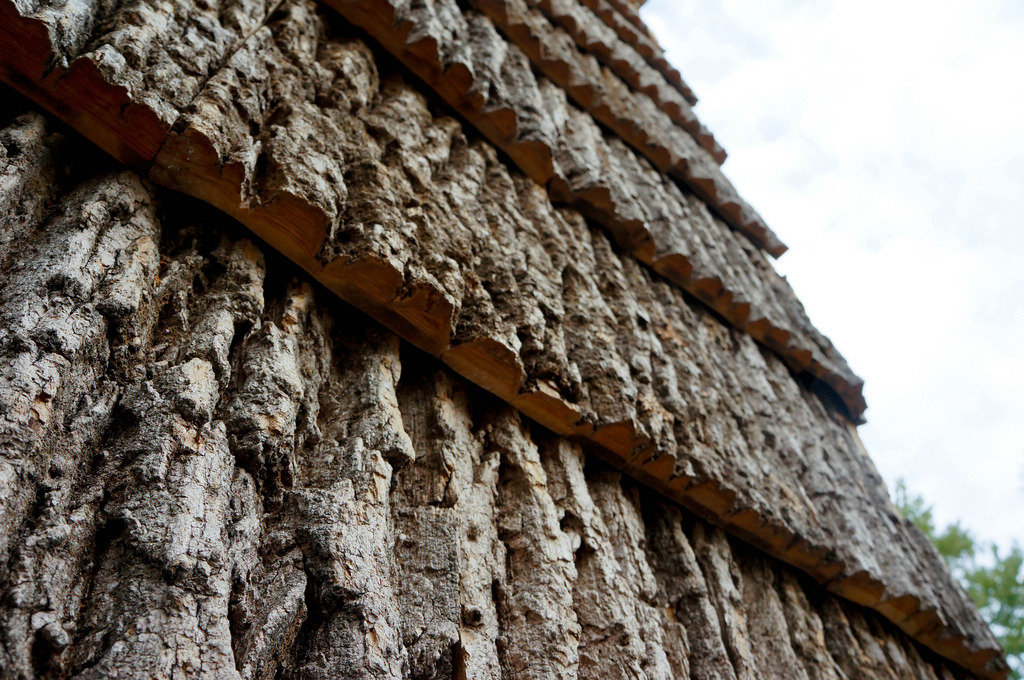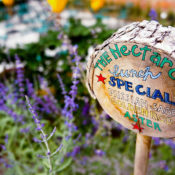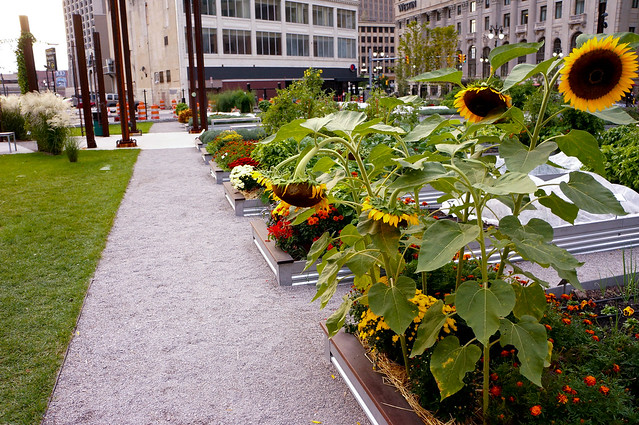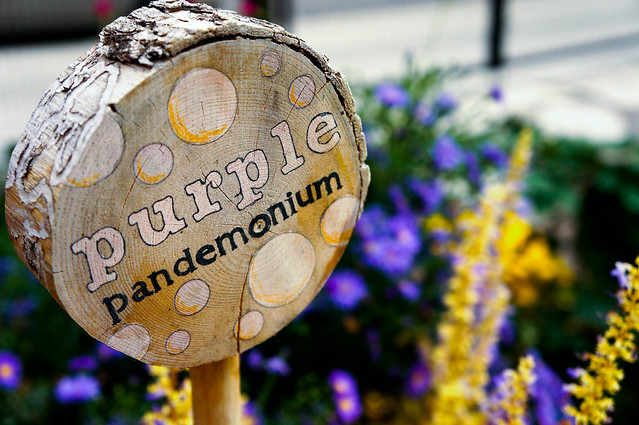Author: Lucy Wang
The Village of Yorkville Park | Toronto, ON
Decorated with numerous awards including a recent 2012 ASLA Landmark Award of Excellence, Yorkville Village Park is a popular and celebrated series of gardens tucked into Toronto’s high-end shopping district. Originally a parking lot built over a subway, a design team composed of Martha Schwartz, Ken Smith, David Meyer Landscape Architects, and local firm Oleson Worland Architects sculpted a linear park that would represent a selection of Ontario’s major bioregions and ecosystems, with each landscape bounded by the lot lines of former Victorian row houses situated in the space.
The desire for a public park to be built over the underground Bloor subway line was voiced since the 1950s, however, it wasn’t until the early 1990s that the city held a design competition for the park. After talking to locals, it seems like everyone knows about this park–it sees a constant flow of people walking through, taking pause, bringing kids, or just sitting to people watch. Toronto is home to many fantastic parks, but Yorkville Village Park ranks very high among my favorites.
Divided into 11 sections of varying widths, each garden section represents a different Canadian landscape composed of a distinct collection of plant communities ranging from upland pine forests to the Ontario marshlands. One of the biggest highlights of the site is the 650-tonne, approximately 1 billion year old granite rock taken from the Canadian Shield, a vast geological area in eastern and central Canada made up of exposed rock dating back to the Precambrian era.
I took a walk through the linear collection of landscapes from the east end’s Scot’s Pine grove to the west end’s Amelanchier Grove. I was impressed by how, in such a small amount of space, the designers were able to layer such a rich combination of textures, colors, and light play; each landscape imparts a different feel through these factors as well as spatial organization.
The eleven landscapes include, from east to west: Pine Groves, Prairie Wildflower Gardens, Birch Groves, Fragrant Herb Rock Garden, Crabapple Orchard, Festival Walk, Ontario Marsh, Alder Grove, The Canadian Shield Clearance and Fountain, Herbaceous Border Garden, and the Amelanchier Grove.
About the Journey:
Hi! My name is Lucy Wang and I’m a recent landscape architecture grad from the University of Maryland. I’m currently traveling the U.S. (and parts of Canada) by public transportation for the next several months in search of great, publicly-accessible landscape architecture sites, as well as landscape architecture firms and universities. I’ll be sharing some of my favorite finds on Land8 along the way. For more information, check out my profile. As always, feel free to leave a comment below!
Where I’ve been:
Chop Stick
Chop Stick functions as a concession stand, but it’s a far cry from what you might find at your local skating rink. Commissioned by the Indianapolis Museum of Art, the innovative Swedish architecture duo vision division carved the outdoor pavilion/concession stand (with swings) almost entirely out of a single, massive 100-foot-tall tulip tree—also the state tree of Indiana.
Transported with many of its limbs intact from a forest near Anderson Indiana to the 100 Acres Museum Art Park, this massive tulip tree was carefully cut apart and stripped of tree bark so as to retain its original structure and as to reuse other portions of the tree for site furnishings such as swings, benches, and tables. The removed tree bark was even repurposed and kiln-dried to create the shingles that cover the concession stand.
concept image credit: visiondivision
According to an IMA report, the design concept for Chop Stick found inspiration from:
“the premise that every product—whether it is a cell phone, a car, a stone floor, or a wooden building—is a compound of different elements of nature, each of which are harvested in specific ways. Chop Stick will function as a rich educational tool that reveals the processes that are usually hidden as trees are harvested and undergo refinement and transformation into structures.”
All parts of the tree were used, from the leaves to the roots.
While I perused the internet for information on Chop Stick, I came across a lot of negative criticism on the project, most of which called the cutting down of the tree a “waste.” But to call Chop Stick a waste misses the point. From concession stand to skyscraper, architecture of all kinds use a massive amount of natural resources. In a more typical concession stand design, the tulip tree would have been broken down into planks and shingles, shapes that would have further removed the user from the original form of the tree. The success of visiondivision’s Chop Stick is its ability to use the tree’s raw form to increase the user’s awareness of nature’s relationship with the built environment.
Unfortunately the concession stand wasn’t open during my visit, but I still got the chance to play around on the swings. It’ll be interesting to come back in a few years to see how Chop Stick weathers in time.
Downtown Detroit Springs to Life with Lafayette Greens
Hi! My name is Lucy Wang and I’m a recent landscape architecture grad from the University of Maryland. I’m currently traveling the U.S. (and parts of Canada) by public transportation for the next several months in search of great, publicly-accessible landscape architecture sites, as well as landscape architecture firms and universities. I’ll be sharing some of my favorite finds on Land8 along the way. For more information, check out my profile. As always, feel free to leave a comment below!
Detroit still struggles with bouncing back from the post-industrial depression, but thankfully, the downtown district has become home to one particularly bright spot of hope: Lafayette Greens. Winner of a 2012 ASLA General Design Honor Award, Lafayette Greens is an edible landscape covering nearly half an acre of a former vacant lot sited on the grounds of the historic and now-demolished Lafayette Building.
I spent only half a day in Detroit—a side trip from Ann Arbor, MI—and in my short time there, Lafayette Greens was my favorite part of the visit. This beautiful and blooming garden space was a fresh breath of life in a city plastered with vacancy and for lease signs. Designed by Beth Hagenbuch of Kenneth Weikal Landscape Architecture for the client Compuware Corporation, Lafayette Greens successfully follows three main concepts: to be productive, beautiful, and inspiring. Fragrant lavender, whimsical sculptures and signage, apple trees, and fresh herbs on raised beds line the gardens; all of the fresh produce is delivered to the local food bank. Offering a multitude of services, this urban garden is not only a beautiful downtown destination and community hub, but also acts as a demonstration garden to educate the community about healthy eating, horticulture, and cooking as well.
Login
Lost Password
Register
Follow the steps to reset your password. It may be the same as your old one.



